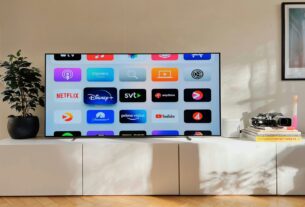Apple (AAPL.O) is predicted to totally switch for all of its iPhone models to OLED (Organic Light-Emitting Diode) displays starting in 2025, hence transforming the smartphone industry. This change marks a departure from the company’s reliance on liquid crystal displays (LCDs), a move that underscores Apple’s commitment to enhancing display technology across its product lineup. According to Reuters report, first word of the announcement came from the Nikkei newspaper of Japan, which cited unnamed sources familiar with the company’s plans.
Why the Shift to OLED?
With OLED panels, Apple’s iPhones will show a notable change. Apple’s decision most likely results from OLED technology’s several primary advantages above traditional LCD screens:
1. Superior Color Accuracy: OLED screens are well known for producing more vivid and accurate colors than LCD screens. Those who enjoy high-definition videos and images will notably gain from this development since OLED screens create deeper blacks and more vibrant colors, therefore improving general viewing experiences.
2. Enhanced Contrast Ratios: OLED technology presents rather remarkable increase in contrast ratios. By each pixel producing its own light, OLED screens provide true darkness and brighter whites. Perfect for daily use as well as high-definition media consumption are sharper, more detailed photos produced from this.
3. Improved Energy Efficiency: Usually speaking, OLED screens—especially those displaying dark content—are more energy-efficient than LCD screens. Since OLED screens only illuminate the pixels needed for the image being shown, darker images or themes help to save battery life.
Impact on Apple’s Supply Chain
Apple’s OLED change calls for new suppliers, so it is phasing out existing ones. The paper lists certain significant changes:
New Supplier Partnerships: Apple has already started ordering OLED screens for the upcoming iPhone SE model from Chinese manufacturer BOE Technology (6740.T) and South Korea’s LG Display (034220.KS). These new partnerships highlight Apple’s strategy to ensure a continuous, reliable and premium supply of OLED panels.
Exclusion of Sharp and Japan Display: Apple’s handset business will notably exclude Japan’s Sharp Corp (6753.T) and Japan Display Inc (6740.T) with the OLED change-over. A decade ago, Sharp and Japan Display had a combined 70% share and had long been main suppliers of Apple displays. While they have lately only given LCDs for models like the iPhone SE, they do not mass-produce OLED panels for smartphones.
Contextual Historical Background and Current Developments
Apple started its OLED journey with the 2017 iPhone X. The first model with an OLED panel, the iPhone X completely transformed the way the company handled display technology. Since then, Apple has gradually introduced OLED displays into its premium iPhone models, reflecting the remarkable performance and user benefits of the technology.
Apple added OLED technology to their May-launched iPad Pro models more recently. This underlines even more Apple’s commitment to bring OLED technology into all of its devices, hence enhancing the user experience with higher display quality.
Reactions in Industry and Future Effects
The move to OLED screens should have many implications for the industry:
• Market Shifts: Should Sharp and Japan Display be excluded from Apple’s supplier chain, its market position may vary. Originally major players in the iPhone display market, these companies will have to adapt to the times or find new avenues of development.
• Supplier Dynamics: Apple’s growing dependence on LG Display and BOE Technology will most likely benefit these suppliers substantially in business. This shift may also lead to more competition among display manufacturers, therefore encouraging further OLED technological innovations.
• Customer Benefits: For consumers, the switch to OLED displays means better screen quality across all iPhone models. Users can expect improved color accuracy, contrast ratios, and energy efficiency, enhancing the overall smartphone experience.
Apple’s Vision: Strategic
Apple’s larger overall strategy goal of maintaining a competitive edge in the market and providing revolutionary technology suits its decision to switch entirely to OLED. Using OLED technology across its full iPhone line, Apple not only enhances its product offers but also sets a new benchmark for display quality in smartphones.
Apple’s constant creativity and delivery of exceptional products depend on OLED’s transformation. As it keeps pushing the limit of technology, the company will most likely look at new ideas and features enhancing user experiences.
Eventually,
Apple’s transition to OLED displays for all iPhones starting in 2025 represents a major technological and strategic shift for the company.
Apple wants to avoid LCDs so that it may provide users greater display quality including enhanced color accuracy, contrast, and energy economy. This decision also marks a significant change in its supply chain, with new partnerships being forged and traditional suppliers being phased out. While Apple leads the way in smartphone innovation, complete adoption of OLED technology stresses its commitment to create outstanding user experiences and staying ahead in the competitive tech industry.
(Photo by Mediamodifier on Unsplash)
Also read:



